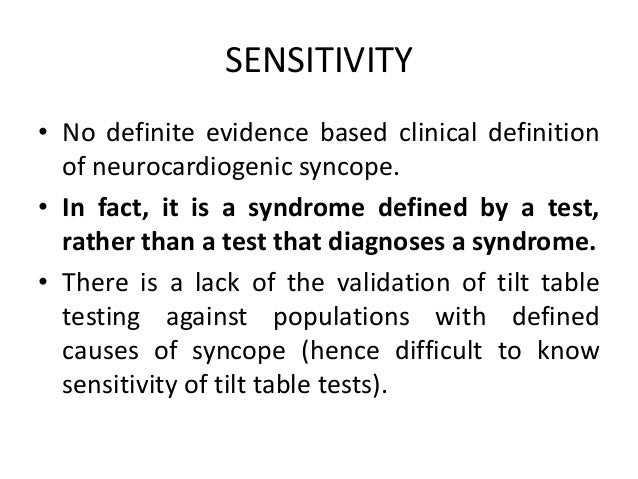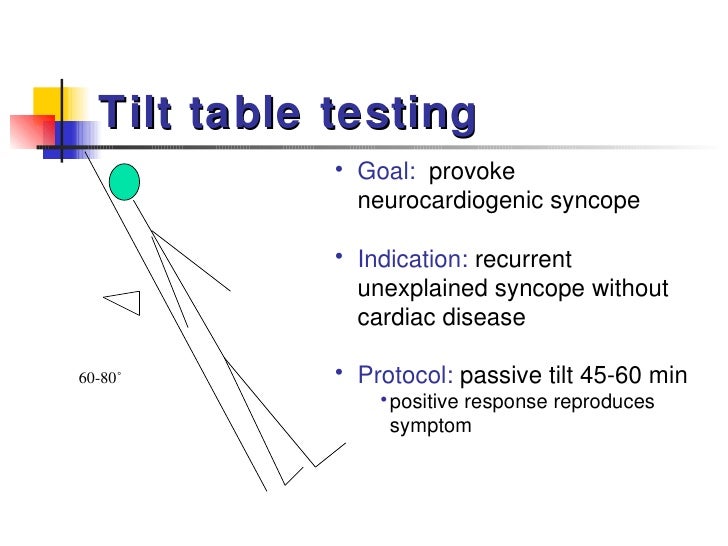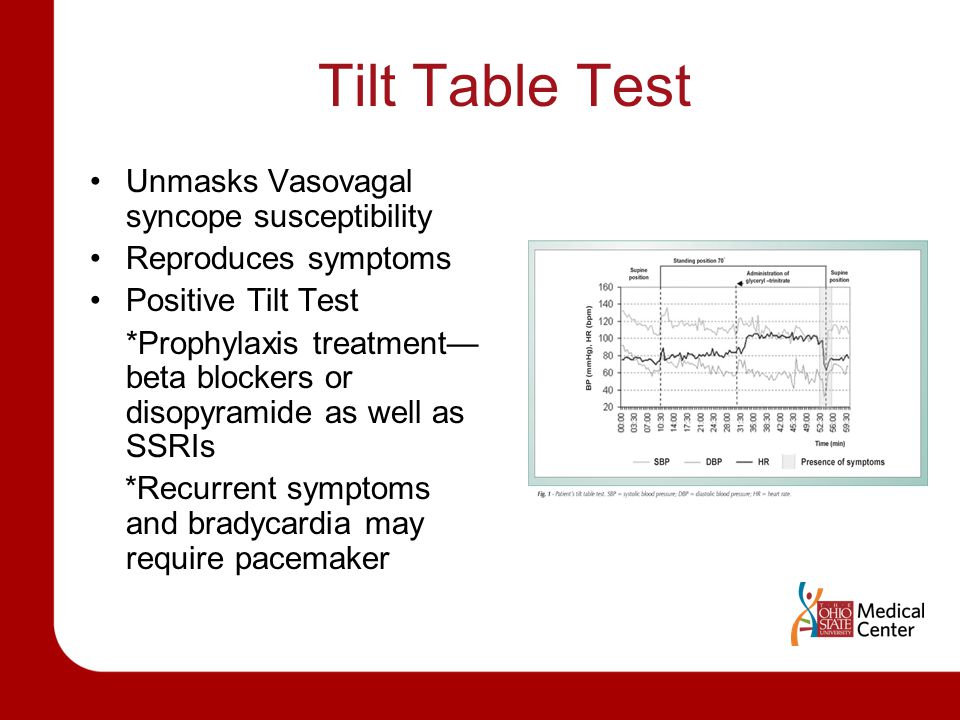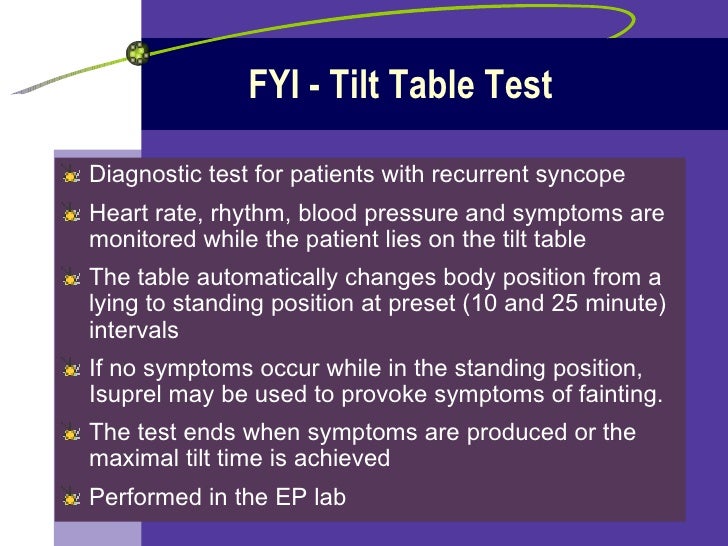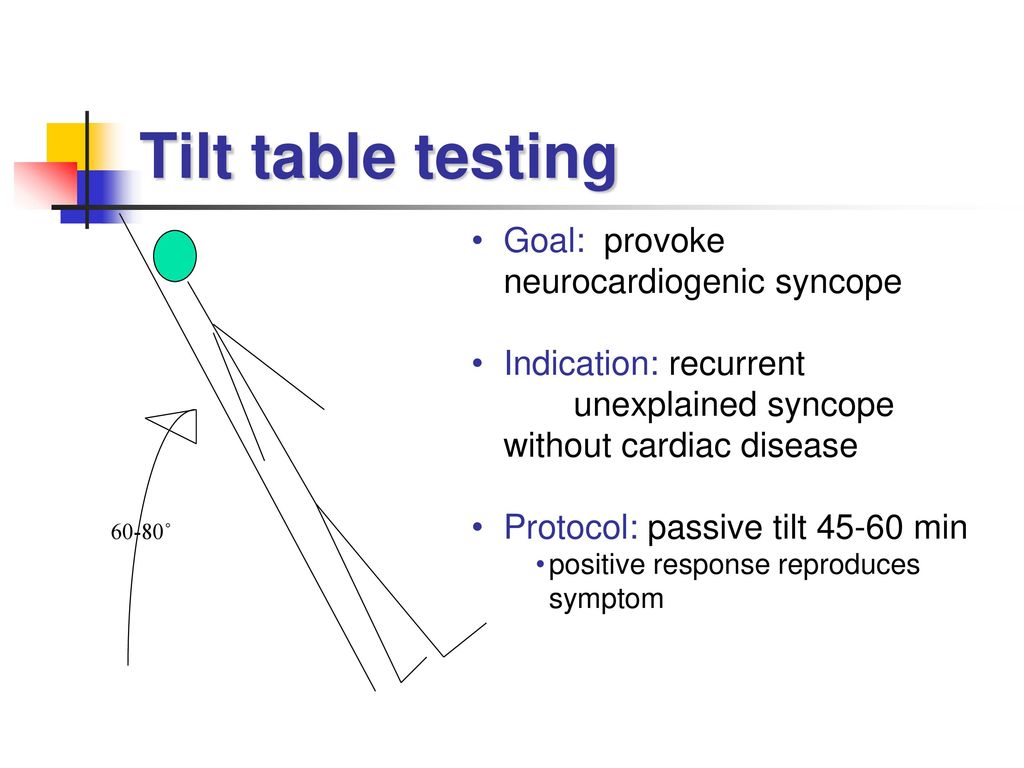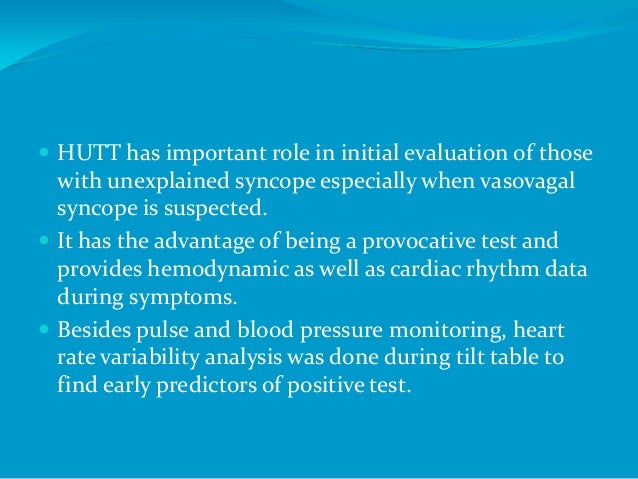Tilt Table Test Neurocardiogenic Syncope

A tilt table test is used to evaluate the cause of unexplained syncope fainting loss of consciousness.
Tilt table test neurocardiogenic syncope. Vasovagal or neurocardiogenic syncope is the most common cause of transient loss of consciousness. And there is significant slowing of the heart as evidenced by a tilt table test or. Your doctor might recommend a tilt table test if you have repeated unexplained episodes of lightheadedness dizziness or fainting. It is a non invasive procedure that involves moving you from a lying to a standing position while your symptoms and vital signs are monitored.
Hut head up tilt pots postural orthostatic tachycardia syndrome vvs vasovagal syncope. Tilt table testing may be helpful in patients in whom the diagnosis of vasovagal syncope is suspected but not certain. A tilt table test is performed in a quiet warm room specially equipped for the investigation. The table changes position tilting you upward at various angles.
It is also useful for the faint to be induced and for patients to be able to confirm. Reviewed by a board certified cardiologist. If you have syncope your healthcare provider will carefully evaluate your past medical history and do a physical exam. A tilt table test is a test done to evaluate symptoms of syncope fainting.
If no heart problems appear to cause your fainting your doctor may suggest you undergo a tilt table test. The individual lies flat on a tilt table and is attached to real time ecg and blood pressure monitoring equipment. Postural orthostatic tachycardia syndrome pots is a clinical entity characterized by orthostatic intolerance that includes an increase in heart rate of at least 30 bpm when one changes from a supine to an upright position within the first 10 minutes of standing without prolonged. The test can help determine if the cause is related to your heart rate or blood pressure.
The upright tilt table test is sometimes performed as part of the evaluation of a patient with suspected vasovagal or orthostatic syncope. Vasovagal or neurocardiogenic syncope is the most common cause of transient loss of consciousness. Prof iana simova syncope transient loss of consciousness due to transient global cerebral hypoperfusion characterised by rapid onset short duration and spontaneous complete recovery is a. If the results of the exam or history do not show a cause for the syncope and you have no history of heart disease then further test may be scheduled.
A tilt table test is used to evaluate the cause of unexplained fainting. Role of tilt table testing in syncope diagnosis and management an article from the e journal of cardiology practice vol. A technician monitors your heart rhythms and blood pressure to see if the postural changes. Glyceryl trinitrate should not be used in aortic stenosis hocm mitral stenosis constrictive.



